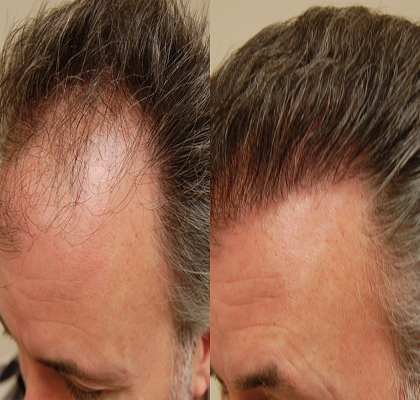Robotic Hair Transplant - Abu Dhabi - Dubai
Robotic hair transplant, also known as robotic follicular unit extraction (FUE), is an advanced method of performing hair transplant procedures. It involves the use of a robotic system to assist in harvesting hair follicles from the donor area and transplanting them to the recipient area.
Here's how the robotic hair transplant process typically works:
- 1. Evaluation: The first step is a consultation with a hair transplant surgeon who will assess your hair loss pattern, donor area, and determine if you're a suitable candidate for a hair transplant.
- 2. Planning: Using advanced imaging technology, the surgeon will create a detailed plan for the transplantation, including the number of grafts required, the hairline design, and the distribution of grafts in the recipient area.
- 3. Donor hair extraction: During the procedure, you'll be positioned on a chair or a surgical bed, and the surgeon will administer local anesthesia to numb the donor area. The robotic system, equipped with cameras and robotic arms, will assist in extracting individual hair follicles from the donor area in a minimally invasive manner. The robotic system uses algorithms to identify and select the most suitable hair follicles for transplantation.
- 4. Graft preparation: Once the hair follicles are extracted, the surgical team will carefully prepare them for transplantation. This involves cleaning and separating the harvested grafts into individual units containing one to four hairs.
- 5. Recipient site creation: The surgeon will create tiny incisions or recipient sites in the target area, considering the natural hair growth pattern, density, and desired aesthetic outcome. The robotic system can assist in this process by providing precision and accuracy in creating the recipient sites.
- 6. Graft implantation: Using specialized instruments, the surgeon or trained technicians will carefully implant the harvested hair follicles into the recipient sites. The direction, angle, and depth of each implantation are crucial to achieve natural-looking results.
Advantages of robotic hair transplant:
- 1. Precision: The robotic system utilizes advanced imaging and algorithms to identify and extract hair follicles with high precision. It helps minimize human error and ensures accurate harvesting and implantation of grafts.
- 2. Minimally invasive: Robotic hair transplant procedures are generally less invasive compared to traditional methods, as they involve smaller incisions and use robotic assistance for follicle extraction. This can lead to faster healing and minimal scarring.
- 3. Consistency: The robotic system can provide consistent results, as it follows a predetermined plan and maintains precision throughout the procedure. This can be particularly beneficial in complex cases or when a large number of grafts are required.
- 4. Reduced surgery time: The robotic system can speed up the process of follicle extraction and recipient site creation, reducing the overall surgery time compared to manual techniques.
It's important to note that while robotic hair transplant technology offers advantages, the skills and experience of the surgeon performing the procedure still play a significant role in achieving successful outcomes. It's essential to consult with a qualified and experienced hair transplant surgeon to determine the best approach for your specific needs and expectations.

